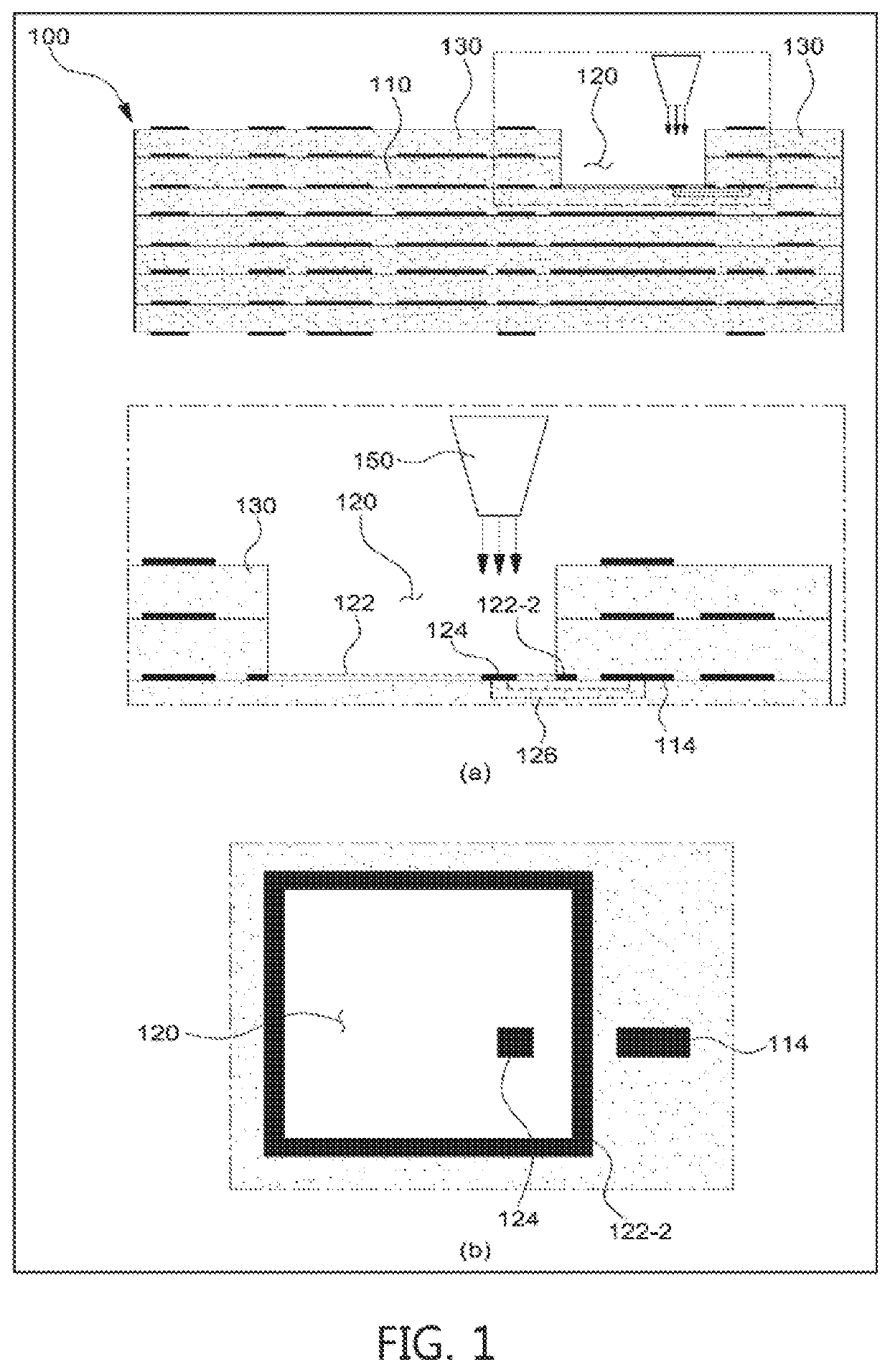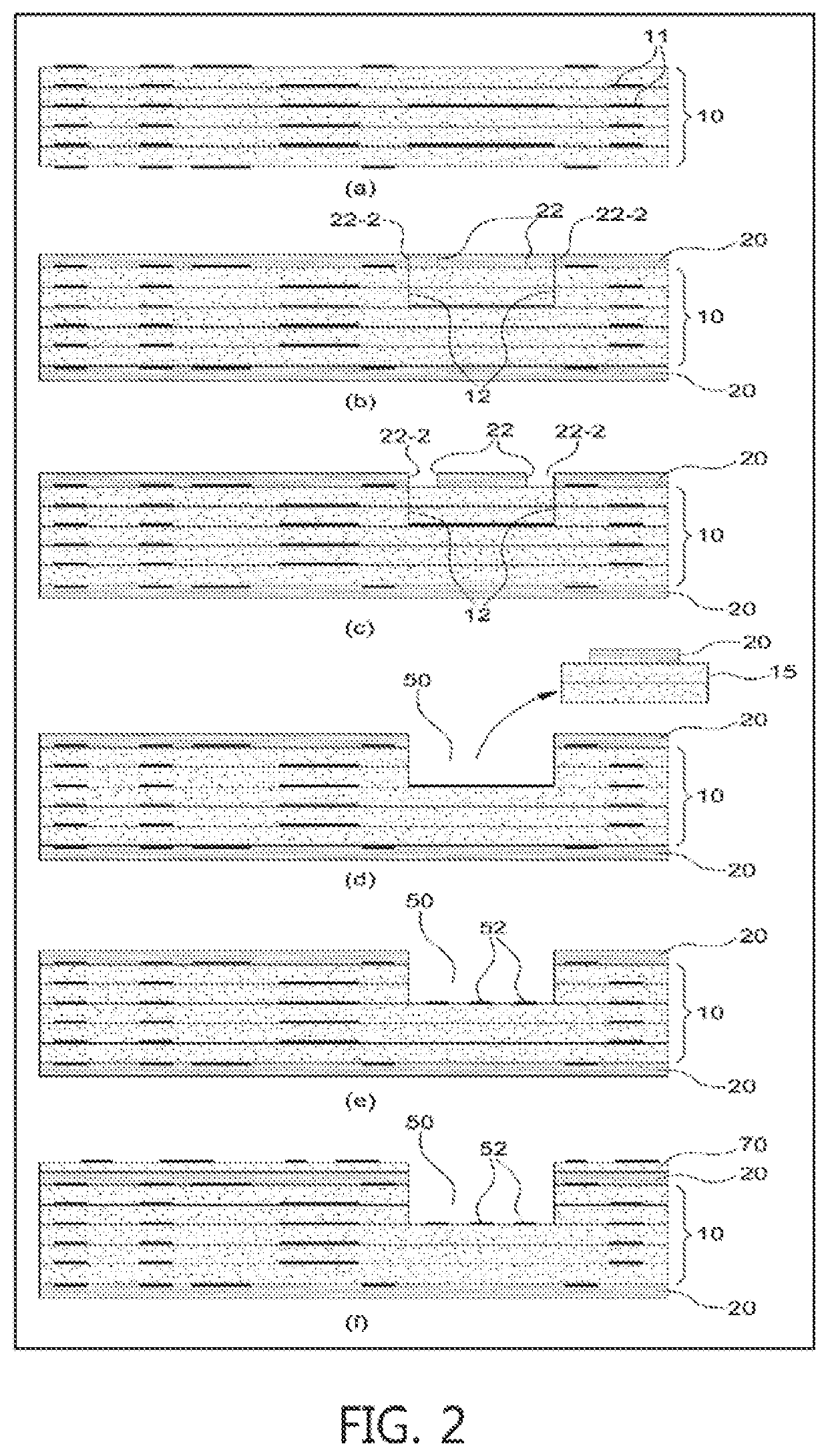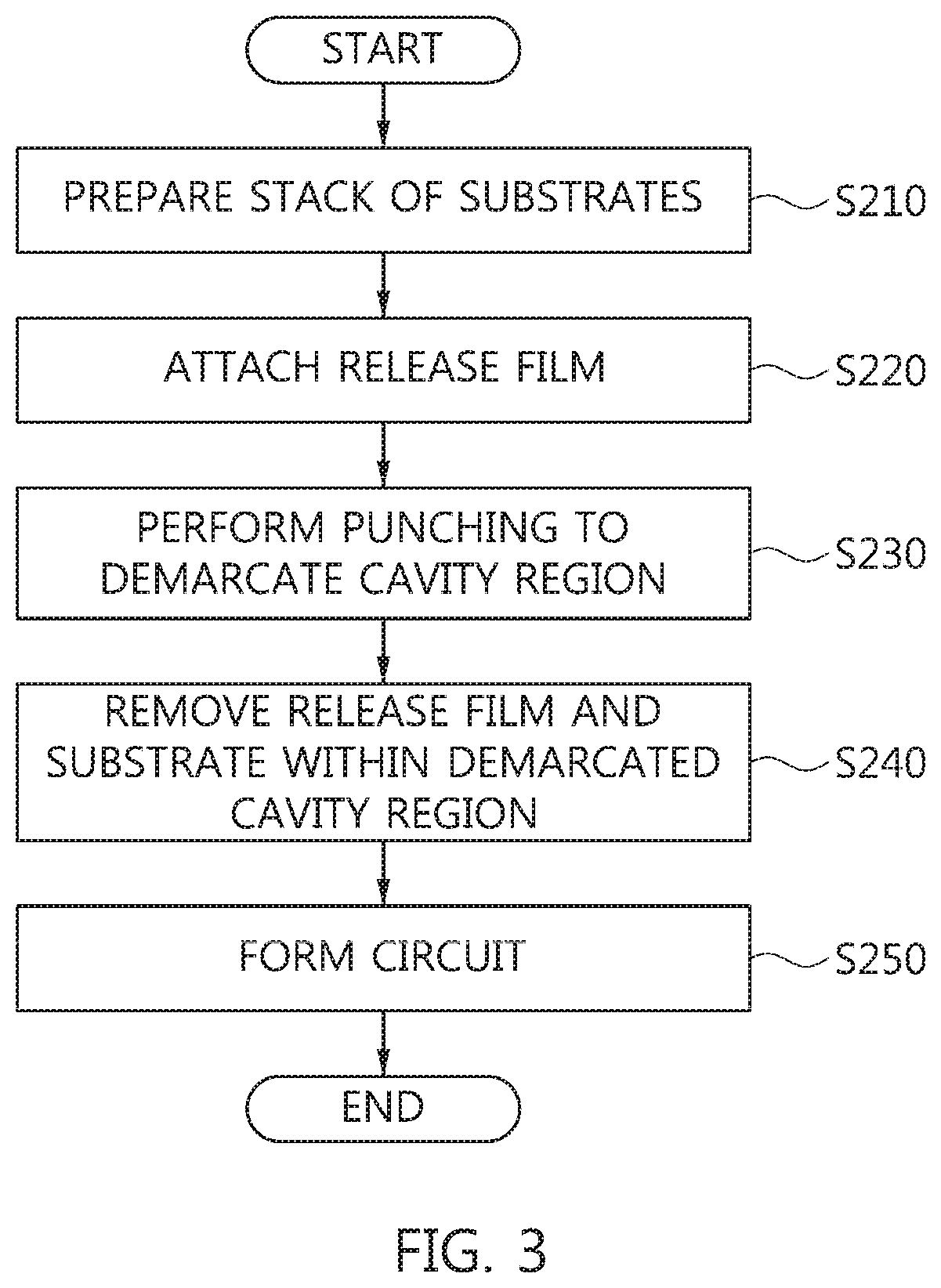Method of forming cavity in printed circuit board by using release film
a technology of printed circuit boards and release films, which is applied in the field of forming cavities in printed circuit boards, can solve the problems of reducing the yield of cavity formation, and increasing the defect rate, and achieves the effects of low manufacturing cost, mass production, and easy processing
- Summary
- Abstract
- Description
- Claims
- Application Information
AI Technical Summary
Benefits of technology
Problems solved by technology
Method used
Image
Examples
Embodiment Construction
[0036]Hereinbelow, exemplary embodiments of the present invention will be described in detail with reference to the accompanying drawings.
[0037]Prior to giving the following detailed description of the present disclosure, it should be noted that terms used in the specification and the claims should not be construed as being limited to ordinary meanings or dictionary definitions but should be construed in a sense and concept consistent with the technical idea of the present disclosure, on the basis that the inventor can properly define the concept of a term to describe his or her invention in best way possible.
[0038]Meanwhile, the exemplary embodiments described in the specification and the configurations illustrated in the drawings are merely examples and do not exhaustively present the technical spirit of the present invention. Accordingly, it should be appreciated that there may be various equivalents and modifications that can replace the exemplary embodiments and the configurati...
PUM
| Property | Measurement | Unit |
|---|---|---|
| thickness | aaaaa | aaaaa |
| thickness | aaaaa | aaaaa |
| thickness | aaaaa | aaaaa |
Abstract
Description
Claims
Application Information
 Login to View More
Login to View More - R&D
- Intellectual Property
- Life Sciences
- Materials
- Tech Scout
- Unparalleled Data Quality
- Higher Quality Content
- 60% Fewer Hallucinations
Browse by: Latest US Patents, China's latest patents, Technical Efficacy Thesaurus, Application Domain, Technology Topic, Popular Technical Reports.
© 2025 PatSnap. All rights reserved.Legal|Privacy policy|Modern Slavery Act Transparency Statement|Sitemap|About US| Contact US: help@patsnap.com



